Description
Vitamin C has long been extensively and unequivocally documented to nutritionally support a wide range of infectious diseases, including many viral syndromes considered incurable even today.
Vitamin C enhances the function of phagocytes of the immune system which capture the body’s invaders then enzymatically digest them.
Vitamin C inhibits neuraminidase production. Some pathogenic viruses and bacteria create neuraminidase, an enzyme that keeps them from being trapped in mucus, one of the body’s natural lines of defense. Inhibiting neuraminidase helps the body optimize this defensive mechanism.
The Camu Camu form of Vitamin C contains synergists of the multitude of positive effects of Vitamin C in the body called bioflavonoids, anthocyanins, proanthocyanins, catechins, and tyrosinase, which further strengthen the absorption and well know essential advantages of Vitamin C.
More Benefits of Camu Camu Vitamin C:
- Essential staple for warding off sickness and maximizing health.
- Key antioxidant utilized for preventing damage and aging to our organs and glands by toxins.
- Growth, repair and rejuvenation of all tissues and organs, particularly skin, hair, bone, teeth, joints and tendons.
- Aids significantly in wound healing.
- Therapeutically improves conditions such as asthma, bleeding gums, bruising.
3.175 oz. 90 grams
Matrix Nutritionals Series was designed in keeping with the principles of BioEnergetic Medicine, the remedies nourish
and support these systems without punishing them with overstimulation or imbalancing factors, which, ultimately, is
counterproductive. This approach has been carefully and respectfully designed to provide the necessary natural (organic
where available), synergistic factors in proper energetic and biochemical ratios, to ensure assistance towards yielding a
deep and lasting result.
Camu Camu (Myrciaria dubia) is the name of an exceptionally significant botanical bush which grows in the Amazonian rain forests of Peru. This bush produces a berry which contains many powerful phytochemicals, amino acids serine, valine, and leucine, and more concentrated natural Vitamin C than any other known botanical in the world. As the berries are part of a whole plant it contains minerals and other nutrients that make it more digestible and bioavailable.
We are proud to support a local community as steward protectors of the now fragile Amazon ecology The power of Vitamin C in all forms is indisputable. This is particularly true of our camu camu sourced botanical Vitamin C, which we have created in a nanosphere liposome formula, complete with synergistically supportive natural factors. Textbooks on genetics indicate that scurvy in the body is due to the inability to synthesize vitamin C is due to mutations in the L-gulono-γ-lactone oxidase (GLO) gene, which codes for the enzyme responsible for catalyzing the last step of
vitamin C biosynthesis. All species tend to produce more of their own vitamin C when they’re stressed, but if you have the gene mutation it is not possible. Chemical analysis, however, proves that when humans are faced with various forms of stress, human livers attempt to make more vitamin C, but they can’t because of the missing DNA codes. Glueksohn-Walesch S. (1963). Lethal genes and analysis of differentiation. Science, 142: 1269 Curr Genomics. 2011 Aug; 12(5): 371– 378 doi: 10.2174/138920211796429736
Vitamin C has already been extensively and unequivocally documented to nutritionally support a wide \range of infectious diseases, including many viral syndromes considered incurable even today. (Stone, 1972; Smith, 1988, Levy, 2002). Vitamin C supports the production of interferons.
Interferons are produced when the presence of pathogens are detected. They facilitate the ability of cells to launch protective cellular defenses. Siegel B, “Enhanced interferon response to murine leukemia virus by ascorbic acid” Infection and Immunity 1974 10(2):
409-410.
Vitamin C enhances the function of phagocytes. Once the invaders are captured in this manner, they are enzymatically digested. Siegel B, “Enhancement of interferon production by poly(rI)-poly(rC) in mouse cell cultures by ascorbic acid” Nature 1975 254(5500):531-532. Vitamin concentrates in white blood cells. Some of the primary cells in the immune system concentrate Vitamin C as much as 80 times higher than the level in plasma. This assures extra delivery of Vitamin C to the sites of infection by the migration of these Vitamin C-rich white blood cells Levy R, Schlaeffer F, “Successful treatment of a patient with recurrent furunculosis by vitamin C: improvement of clinical course and of impaired neutrophil functions” International Journal of Dermatology 1993 32(11):832-834.
Disclaimer: Limited to licensed Healing Arts Professionals for clinical research purposes only.. The commentary is not meant to diagnose, treat or replace conventional treatment, and has not been approved or reviewed by the FDA, Health Canada, BMS, European Union Health Commission, South and Central American regulation agencies etc. BPA CHINA GMO CORN
The non-hydrogenated extraction removes all soy proteins and other soy components/non-allergenic. Proprietary nanosphere liposome greatly increase absorption and assimilation quotients equivalent to 5m grams. No bowel tolerance concerns.
Synergistically Formulated Ingredients
Organic Wild Camu Camu (Myrciaria dubia) /Tapioca Vitamin C 1 gram: Camu camu is a low-growing shrub found throughout the Amazon rain forests of Peru and Brazil. It produces a lemon sized, light orange to purplish red fruit with yellow pulp. This fruit is packed with more natural vitamin C than any other food source recorded on the planet in addition to beta-carotene, potassium, calcium, iron, niacin, phosphorus, protein, serine, thiamin, leucine, and valine. These powerful phytochemicals and amino acids have a surprising range of therapeutic effects. Camu camu has astringent, antigenotoxic antioxidant, anti-inflammatory, emollient and nutritional properties. According to a 2008 study published in the Journal of Cardiology, camu camu berry extracts were shown to reduce the levels of oxidative stress markers like urinary 8-hydroxy-deoxyguanosine, thereby improving the inflammation and oxidative stress levels of the participants. Organic Tapioca: Cassava or Manihot esculenta, is a bushy South American shrub with long tuberous roots, which are traditionally eaten like potatoes. Nutritionally it provides a highly assimilable source for hypoallergenic Vitamin C, B vitamins and Vitamin K. It is a good source of essential minerals including zinc, potassium, magnesium, copper, iron, and manganese. High antioxidant content! Both Camu camu and tapioca are exceptionally well tolerated. Vitamin C supports the cell-mediated immune response. There are 2 major ways that the body can respond to a pathogen: antibody-mediated immunity and cell-mediated immunity. Cell-mediated response refers to the activation of macrophages, natural killer cells, and antigen-specific T-lymphocytes that attack anything perceived as a foreign agent. Geber W, Lefkowitz S, Hung C, “Effect of ascorbic acid, sodium salicylate, and caffeine on the serum interferon level in response to viral infection”
Pharmacology 1975 13(3):228-233. Vitamin C neutralizes oxidative stress. Goetzl E, et al, “Enhancement of random migration and chemotactic response of human leukocytes by ascorbic acid” The Journal of Clinical Investigation 1974 53(3):813-818. Vitamin C inhibits neuraminidase production. Some pathogenic viruses and bacteria create neuraminidase, an enzyme that keeps them from being trapped in mucus, one of the body’s natural lines of defense. Inhibiting neuraminidase helps the body optimize this defensive mechanism. Ganguly R, Durieux M, Waldman R,
“Macrophage function in vitamin C-deficient guinea pigs” The American Journal of Clinical Nutrition 1976 29 7):762-765.
Sodium ascorbate: Sodium ascorbate is manufactured by dissolving pharmaceutical grade ascorbic acid (from tapioca) with sodium hydrogen carbonate mined from the earth. The sodium in this product differs from common table salt in that it is not combined with chloride. Sodium chloride (table salt) has long been known to facilitate fluid retention (increased plasma volume), a state that directly aggravates hypertension and heart failure. However, it appears that only sodium really results in significant fluid retention when administered with the chloride anion. Sodium, when given with the anions citrate, ascorbate, or bicarbonate does not adversely affect hypertension or increase blood volume. Sodium ascorbate is what is used in high dose Vitamin C IVs. Because of these findings, it has been directly suggested that the concept of ‘sodium-dependent” hypertension should be changed to “sodium chloridedependent” hypertension. (Kurtz and Morris, 1983; Kurtz et al., 1987). “For acute infectious and toxic states, I still recommend giving intravenous sodium ascorbate, usually at doses of 50 grams or more over several hours for most individuals. However, I would also recommend adding the liposome-encapsulated form of vitamin C orally at the same time. If the intravenous sodium ascorbate is not available, I recommend taking sodium
ascorbate to bowel tolerance, and then taking the liposome form of vitamin C, several grams hourly, guided by symptoms and clinical response to determine subsequent dosing” Levy, T., Curing the Incurable: Vitamin C, Infectious Diseases, and Toxins, Henderson, NV: Medfox Publishing; 2002.
Phosphatidylcholine 500 mg (from 1200 mg lecithin): A fatty acid group often used for enhancing cognition. PC is a cholinergic compound with memory
improving and neuroprotective benefits. Phosphatidylcholine is a key structural component of cellular membranes and also plays an important role in the transport of fats throughout the bloodstream. Nutritional support may include memory, liver protection, learning ability, brain trauma, Alzheimer’s disease, dementia, neuroprotection.
ORGANIC Theobroma cacao: Very rich in polyphenol reducing carcinogen metabolic activation. We found this unique form of cacao in St. Lucia where we have come to know the grow- ers. We watched their hands-on operation, free from pesticides and 100% natural/sundried. We’re proud to help out the small farmer communities there. This is completely different than sweetening flavorings that you find in most “chocolate” flavored products. This is another example of a “non-medicinal/ medicinal”! Clinically speaking, theobroma cacao may inhibit cytochrome P450 (CYP) 1A activity. From this, researchers have concluded “inhibition of CYP1A activity by cacao products may prevent DNA damage by reducing metabolic activation of carcinogens”. Phytother Res. 2009 Aug;23(8):1134-9. doi: 10.1002/ptr.2762. Crude cacao Theobroma cacao extract reduces mutagenicity
induced by benzo[a]pyrene through inhibition of CYP1A activity in vitro. Ohno M1, Sakamoto KQ, Ishizuka
M, Fujita S. A beneficial effect of cocoa flavanols for peripheral and cerebral vascular function in humans is supported by a number of trials. In one study, consumption of flavanol-rich cocoa induced vasodilation through activation of the nitric oxide system, providing one plausible mechanism for vascular benefits. Also, cocoa flavanols have been linked to enhanced endothelial function; a recent meta-analysis reported a pooled estimate increase of 2% in flow-mediated dilation after cocoa consumption compared with placebo control. Lamport DJ, Pal D, Moutsiana C, et al. The effect of flavanol-rich cocoa on cerebral perfusion in healthy older adults during conscious resting state: a placebo controlled, crossover, acute trial. Psychopharmacology (Berl). September 2015;232(17):3227-3234.
Organic Agave is extracted using a unique fermentation extraction method. This does not concentrate the agave into a syrup, neither does it remove the healthy fructans. This is a clean, organic, raw agave nectar! Recent data shows that inulin-type fructans extracted from raw nectar agave regulate
appetite and lipid/glucose metabolism by promoting glucagon-like peptide-1 (GLP-1) production in the colon. GLP-1 is the only known incretin (describing its ability to decrease blood sugar levels in a glucose-dependent manner by enhancing the secretion of insulin). Beside the insulinotropic effects, GLP-1 has been associated with numerous regulatory and protective effects. Fermentable fructans are able to promote the production of satietogenic/ incretin peptides in the lower part of the gut, with promising effects on glucose metabolism, body weight and fat mass development. Judith E. Urías-Silvas, Patrice D. Cani, Evelyne Delmée, Audrey Neyrinck, Mercedes G. López and Nathalie M. Delzenne (2008). Physiological effects of dietary fructans extracted from Agave tequilana Gto. and Dasylirion spp.. British Journal of Nutrition Van den Ende, Wim (2013). “Multifunctional fructans and raffinose family oligosaccharides”. Frontiers in Plant Science. 4. doi:10.3389/fpls.2013.00247. Baggio LL, Drucker DJ (2007). “Biology of Incretins: GLP-1 and GIP”. Gastroenterology. 132 (6): 2131– 2157. doi:10.1053/j.gastro.2007.03.054.

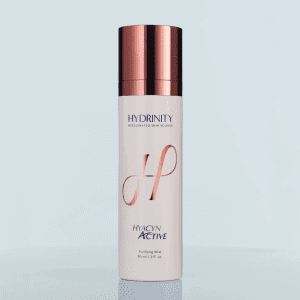
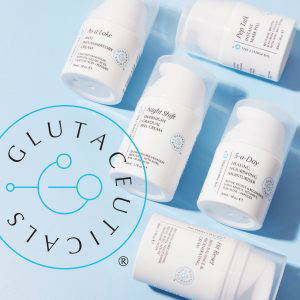
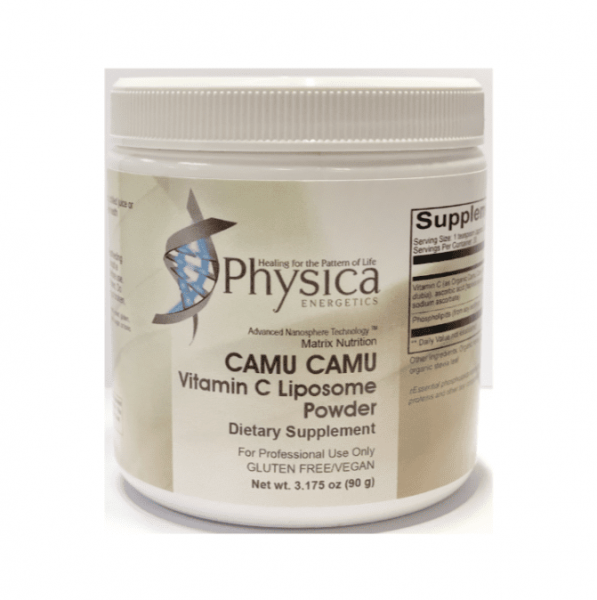
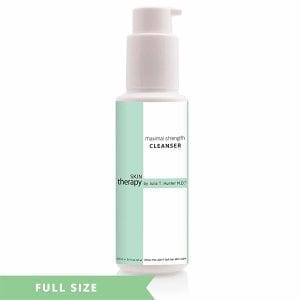
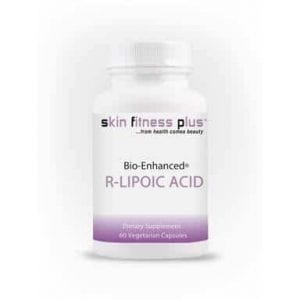
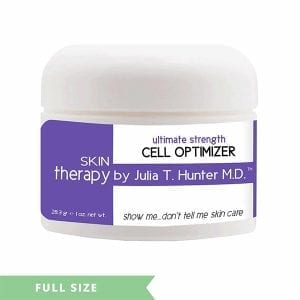
Rumen Goshev –
One of the very few vitamin C supplements that’s worth spending money on. Non irritating to the stomach, visible results with a week, skin and body feel. It taste amazing, easy to take and highest quality of ingredients.
I trust everything J. Hunter make in term of skincare and supplements and I’m grateful to be able to buy her products in UK from Medifine! Thank you!